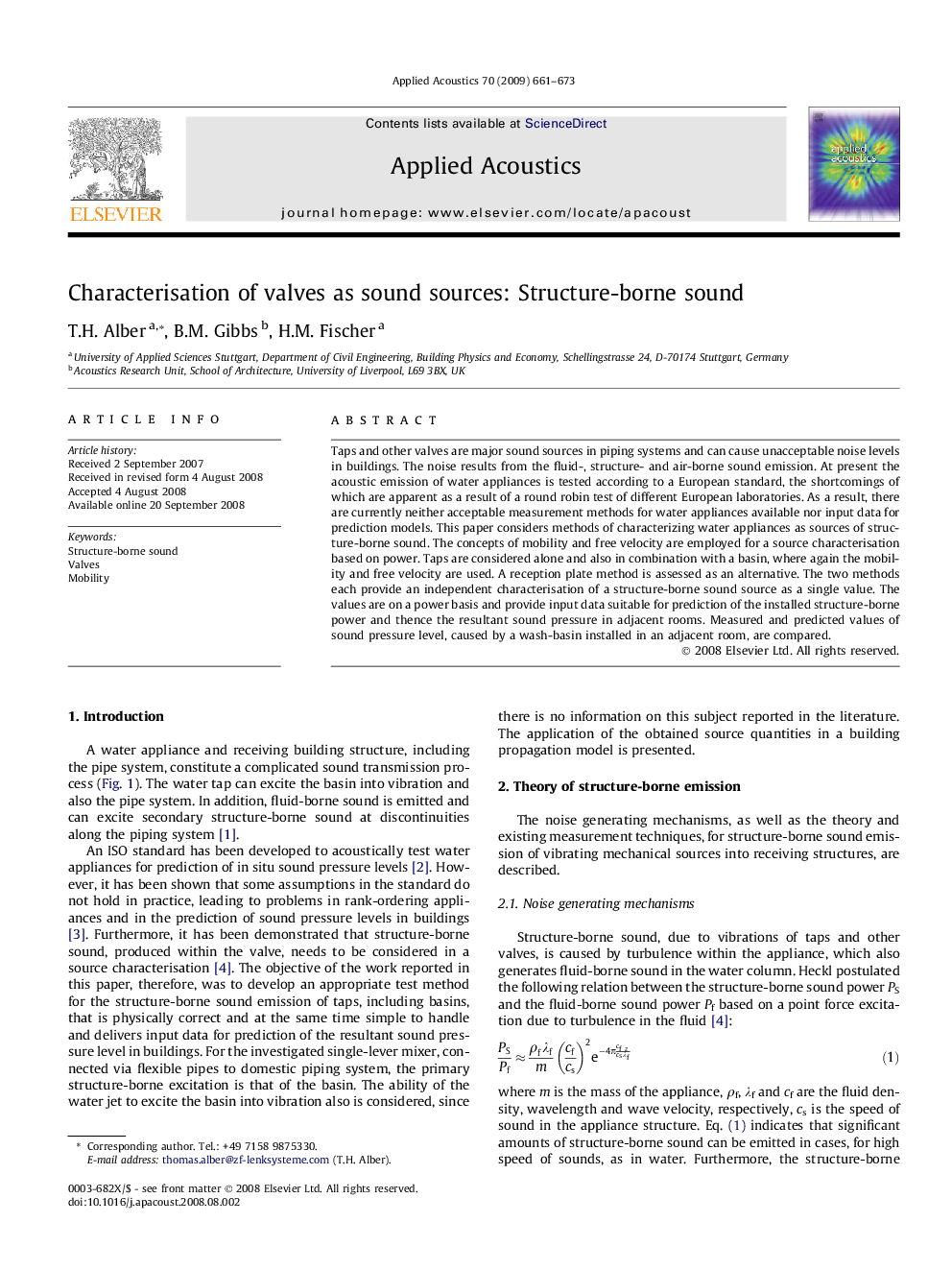| کد مقاله | کد نشریه | سال انتشار | مقاله انگلیسی | نسخه تمام متن |
|---|---|---|---|---|
| 754696 | 895881 | 2009 | 13 صفحه PDF | دانلود رایگان |

Taps and other valves are major sound sources in piping systems and can cause unacceptable noise levels in buildings. The noise results from the fluid-, structure- and air-borne sound emission. At present the acoustic emission of water appliances is tested according to a European standard, the shortcomings of which are apparent as a result of a round robin test of different European laboratories. As a result, there are currently neither acceptable measurement methods for water appliances available nor input data for prediction models. This paper considers methods of characterizing water appliances as sources of structure-borne sound. The concepts of mobility and free velocity are employed for a source characterisation based on power. Taps are considered alone and also in combination with a basin, where again the mobility and free velocity are used. A reception plate method is assessed as an alternative. The two methods each provide an independent characterisation of a structure-borne sound source as a single value. The values are on a power basis and provide input data suitable for prediction of the installed structure-borne power and thence the resultant sound pressure in adjacent rooms. Measured and predicted values of sound pressure level, caused by a wash-basin installed in an adjacent room, are compared.
Journal: Applied Acoustics - Volume 70, Issue 5, May 2009, Pages 661–673